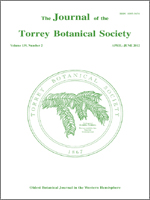Diversity and compositional dynamics in deciduous forests of eastern North America are subject to an array of drivers, and these forests are thought to be undergoing a long-term dominance shift in which maples (Acer spp.) are replacing oaks (Quercus spp.). We examined dynamics of woody understory species in an old-growth central Appalachian forest to document baseline dynamics over a decade and describe the relationships between diversity and surrogate measures of productivity (density and cover). We also investigated the reaction of shrub- and ground-layer vegetation to a recent fire in one portion of the study site. Over a ten-year interval (2000–2010), shrub-layer densities of Acer spp. decreased significantly (P < 0.01) and Quercus spp. did not change. Ground-layer densities of Acer spp. increased significantly (P < 0.01) while mean cover decreased significantly (P < 0.01). For a few Quercus species, ground-layer densities increased significantly (P < 0.01), and mean cover of ground-layer Quercus alba increased significantly (P < 0.05). Significant unimodal relationships (P < 0.01) were exhibited between diversity/richness and density/cover in both understory strata. Plots burned by a wildfire in 2010 had significantly lower shrub-layer density and species richness (P < 0.01) compared to pre-disturbance data in 2000. In the same area, the ground-layer response to this fire disturbance was equivocal, with increased density, decreased cover, and unchanged diversity and richness. Decadal oak-maple dynamics in the woody understory of this old-growth stand did not fully support the hypothesized oak-to-maple dominance shift; changes in shrub- and ground-layer populations of Acer spp. were erratic while Quercus spp. populations appeared stable. Unimodal relationships between diversity and productivity surrogates were found in both woody understory layers and are likely driven by the range of environmental conditions found within the study site. Fire induced short-term changes in the shrub- and ground-layers and may have facilitated colonization of invasive species. Quantification of changes across all woody forest strata in areas of minimal anthropogenic disturbance (e.g., old-growth stands) is important for understanding baseline dynamics of deciduous forests in eastern North America.
How to translate text using browser tools
1 April 2012
Tree regeneration ecology of an old-growth central Appalachian forest: Diversity, temporal dynamics, and disturbance response
Julia I. Chapman,
Ryan W. McEwan
ACCESS THE FULL ARTICLE
Appalachian
diversity
ground-layer
old-growth
shrub-layer





